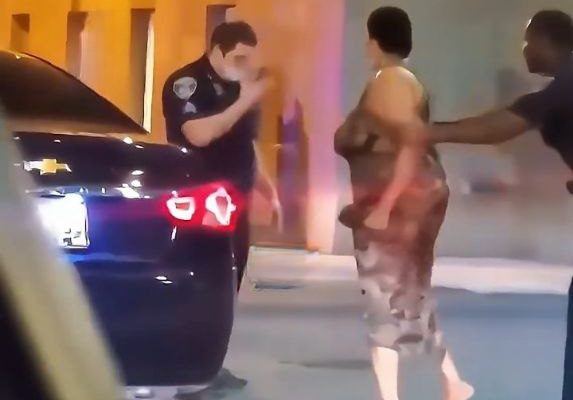New York City, August 27, 2025 — Social media erupted yesterday after a video went viral showing a woman striking a New York Police Department (NYPD) officer during a heated street confrontation. The clip, first posted on TikTok before spreading rapidly to X (formerly Twitter) and Instagram, has since amassed millions of views and ignited a nationwide discussion on policing, public behavior, and the influence of social media.
The Incident
The short video shows the woman shouting before striking the officer, who was on active duty at the time. Despite the aggression, the officer did not retaliate. Instead, he maintained his composure, subdued the woman, and placed her under arrest. Authorities confirmed she has been charged with assault on a police officer and disorderly conduct — offenses that could carry a pris
“The use of force against law enforcement is a serious crime and will not be tolerated,” an NYPD spokesperson said. “This officer’s calm and professional response demonstrates the standards our department upholds in high-stress situations.”

The debate reflects broader concerns about policing, accountability, and the way social media amplifies moments of conflict. Experts note that videos like this often go viral because they tap into larger societal issues — in this case, law enforcement, public conduct, and civil discourse.
Striking a police officer is considered a felony under New York law, carrying serious penalties including jail time, fines, and a permanent criminal record. Legal analysts say prosecutors often pursue such cases aggressively to reinforce the message that attacks on law enforcement will not be tolerated.
Beyond the courtroom, the incident has sparked conversations about civility in public spaces and the powerful role of bystanders with smartphones. While some argue viral clips can lack full context, others see them as essential tools of transparency and accountability.


Broader Context
Law enforcement trainers highlighted the officer’s conduct as a model of professionalism under pressure. According to NYPD guidelines, officers are trained to prioritize de-escalation and apply force only when absolutely necessary. This case, they say, shows those principles in practice.
At the same time, the incident underscores how quickly local disputes can escalate into national talking points once amplified online. Experts caution that public behavior, especially confrontations involving police, carries not just immediate risks but long-lasting legal and social consequences.
Conclusion
The viral video of a woman striking an NYPD officer has become more than a moment of public disorder — it has sparked a larger conversation about law enforcement, accountability, and the impact of digital platforms on public discourse.
As the woman faces formal charges, the case serves as both a cautionary tale for civilians and a reminder of the professionalism required of officers in high-stress encounters. In an age where every confrontation can be broadcast worldwide in seconds, the stakes — both legal and social — have never been higher.



